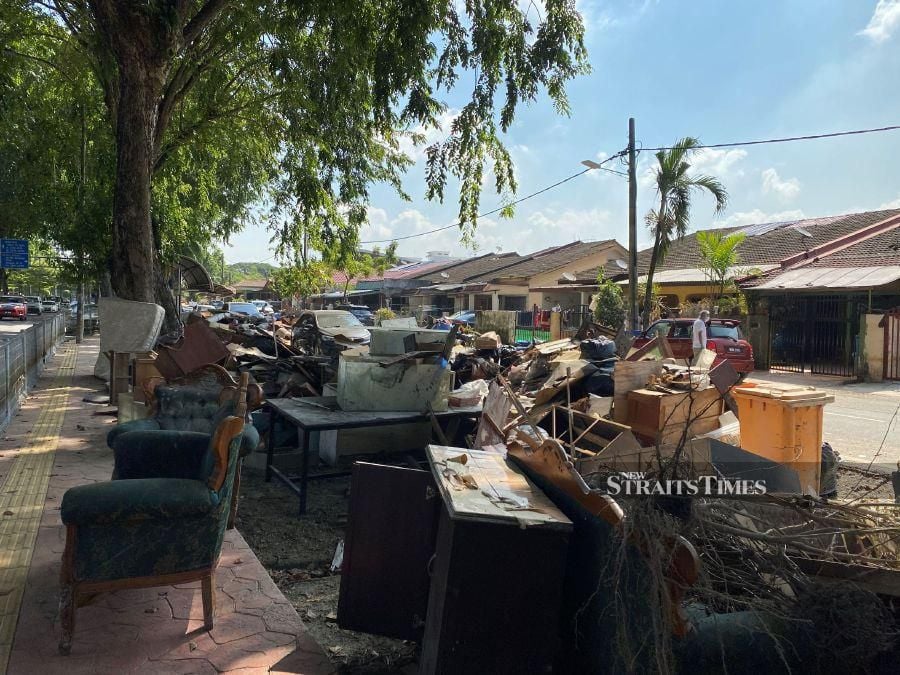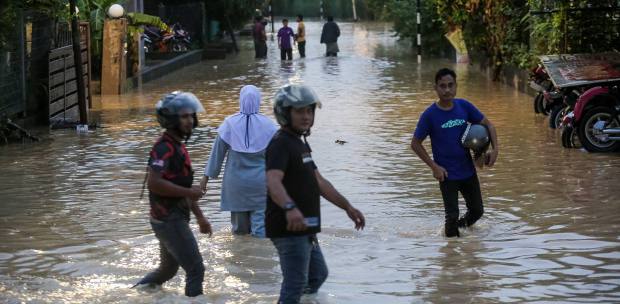I WAS stuck. I couldn't move my car forward. The piles of discarded furniture, and layer upon layer of things… soiled mattresses, cupboards, washing machines, shoes, toys, and stoves, all spilled onto the road in front of me.
I reversed my car and attempted to turn to another road. A tractor and a truck blocked it. I could only watch in silence as the tractor rammed into the piles of garbage, scooped everything up before dumping it all into the truck. The massive job would take some time. I knew it was pointless to wait.
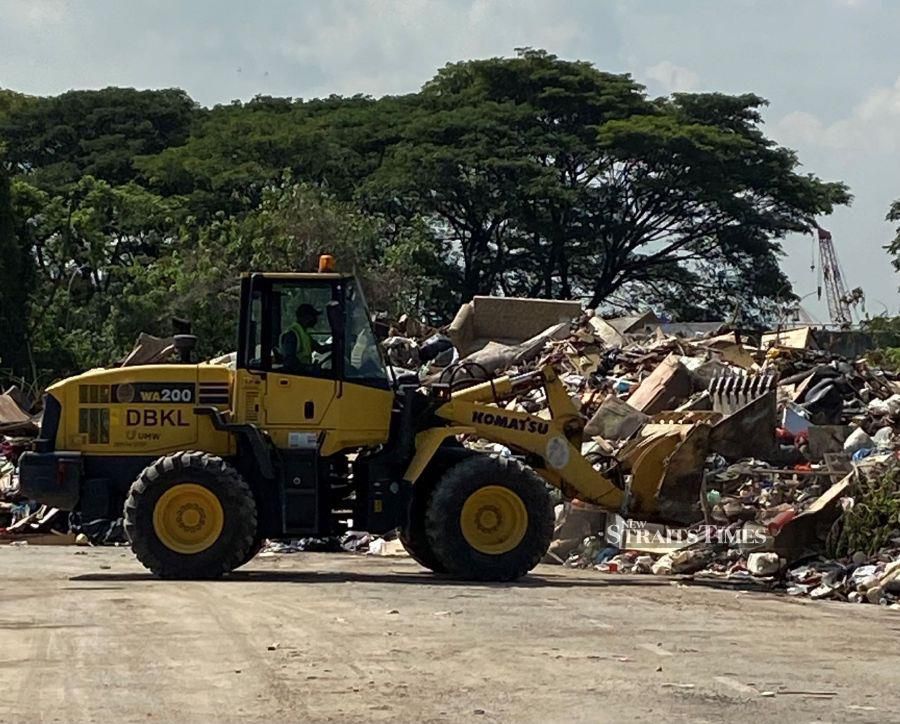
I managed to reverse once again and back my way into yet another road, which runs parallel with other roads in the housing area near Jalan Gemilang 25/1 in Taman Sri Muda, one of the areas in Shah Alam drowned in the massive flood that began on December 18.
The roads here are narrow, sandwiched between rows of single-storey terrace houses.
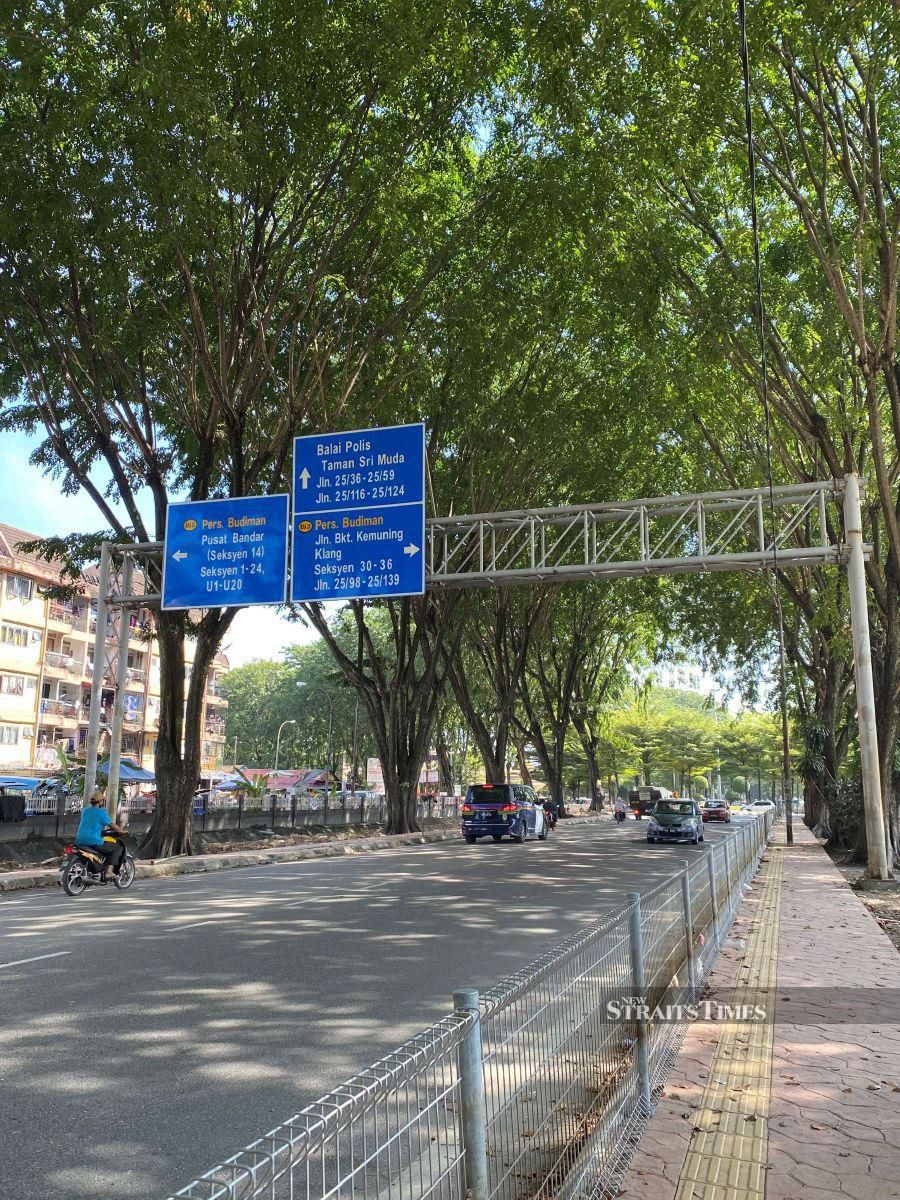
That road that I took was also blocked; not by the mountains of trash, but by men who wielded tools to prise metals out of broken furniture and throw them to a waiting truck. The metals would fetch good money at scrap shops, I mused to myself.
I saw a ray of hope to get out of the choked area, complete with its jumble of dried, wilting trees, their stems and leaves covered with grey-brown mud. Even the houses looked dilapidated with mud-caked walls, doors and windows.
The floodwaters had submerged those houses. Only their roofs were visible on video footages I had seen earlier. The sight of people perched on the roofs played on my mind. These flood-ravaged people — wet, tired, cold — were desperate for help at the height of the flood, one of the worst in recent times. For a moment I was lost in my own thoughts as I replayed the scenes on my mind.
PATIENCE IS A VIRTUE
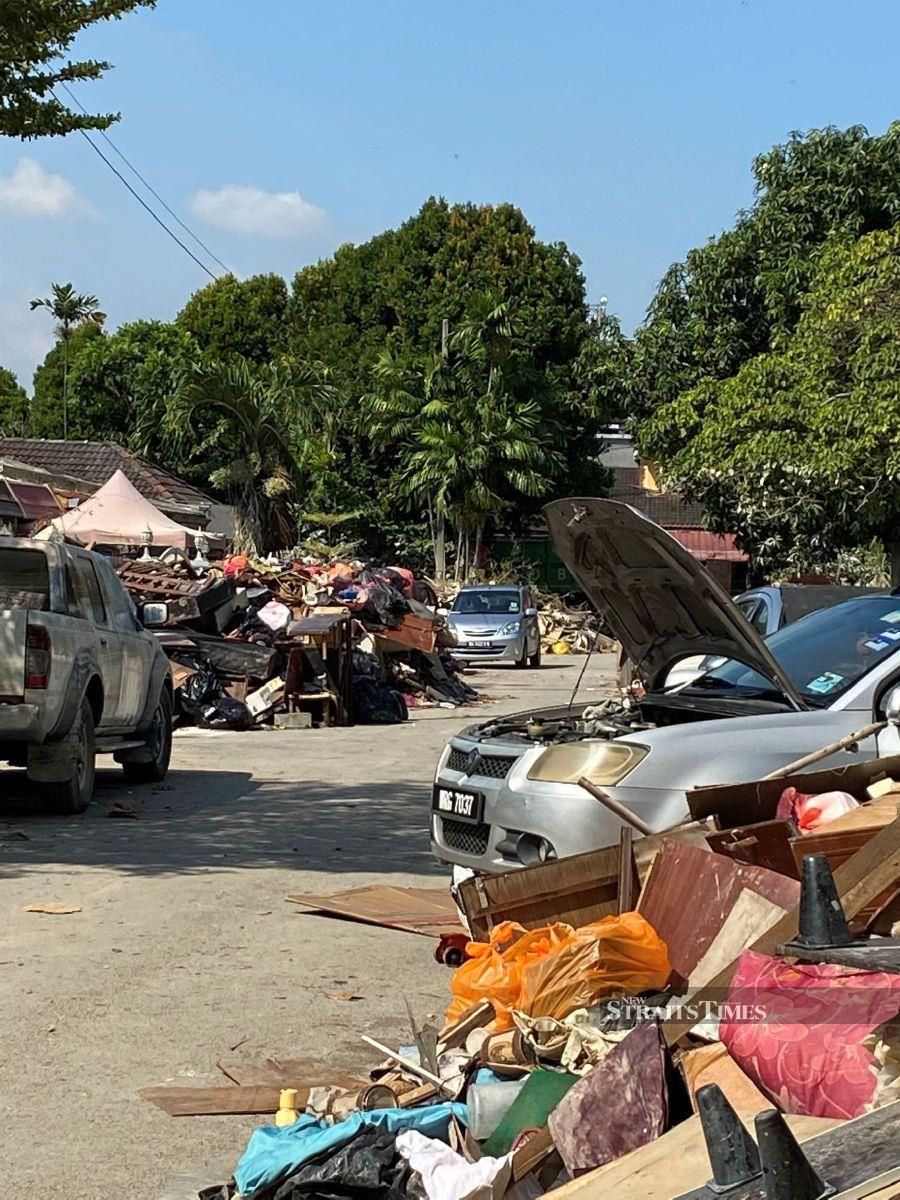
The sounds of a car engine jolted me. Then I saw a young man parking his car on a curb near me. I alighted from my car and approached him before proceeding to ask how I could get out of the area. He said it would be hard because everything was blocked.
Pointing to the men working on the road, I appealed to him to help ask them to make way. I had reasoned to myself that it would be best to get a local to speak to his own neighbours.
Those men had earlier seen me trying to manoeuvre my way out, but had completely ignored me.
Within minutes of the young man talking to them, they cleared parts of the path, allowing me the access to another road. But there, I met with a burly, elderly man sitting on a stool right in the middle of the road, cleaning something in his hand. He refused to budge even when others near him asked him to move so that I could pass through.
No, it wasn't the time to lose one's temper and spew curses. They'd just survived a harrowing experience that threatened their lives. They were salvaging anything that they could. The cleaning work in the aftermath of the big flood was huge. Some had lost everything of value. Some were hurt. Some had died. If anything, this was a time to raise our patience.
I skirted around the elderly man, carefully inching my car next to a truck. I was stopped in my tracks just seconds away. Another car "sprawled" in the middle of the road. A couple was heaping bundles of garbage bags into the car. From the way they carried the bundles, I concluded that they contained wet clothes, perhaps to be taken to a laundrette.
After stacking the last bundle into the car, the woman hurriedly got into the driver's seat, looking in my direction. She backed her car towards the exit road behind her. As she turned her car and moved forward, she looked at me again, and I waved at her and smiled. She returned my smile, waving as she drove away. That smile made me happy. Friendliness is alive in an area quite notorious for thefts, robbery and fights.
ALL HANDS ON DECK
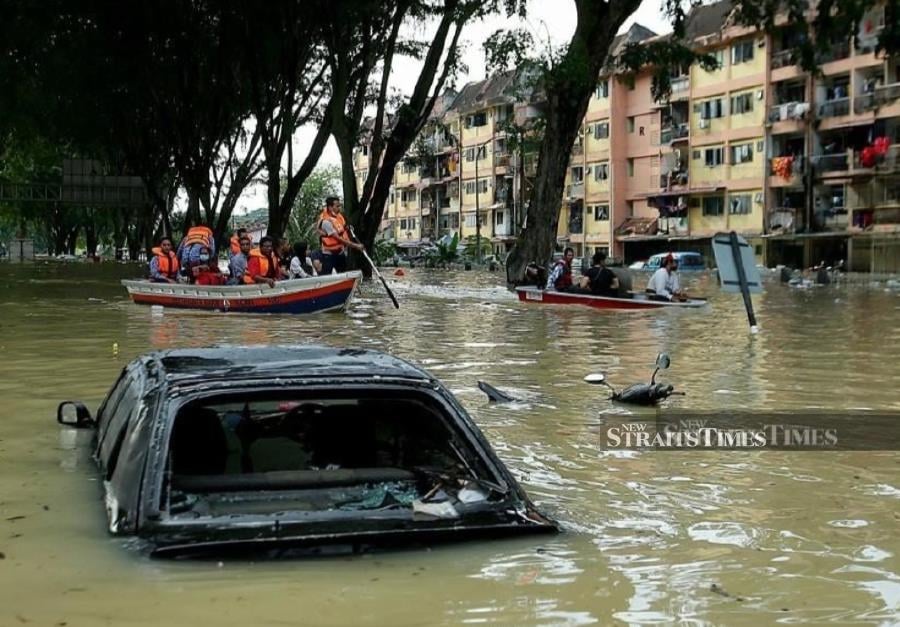
On that fateful day of Saturday, Dec 18, the thriving town of Taman Sri Muda became a sea of murky waters literally overnight. Access was only by boat, or whatever manner of floating devices, including large plastic barrels, which residents were forced to use to stay afloat.
By December 22, rescuers found two more bodies from the flood in Taman Sri Muda, bringing the total number of fatalities in the area to nine. The bodies, found in one of the single-storey terrace houses in the area, belonged to a 78-year-old man and his 48-year-old daughter.
News of such deaths didn't deter me from wanting to see the situation there for myself. But friends had advised me to wait because the waters hadn't fully receded. Moreover, I'd read a news report in the New Straits Times on December 21 that the police had barred people from freely entering the flood-stricken area to avoid congestion and deter obstructions that might hamper rescue work.
I heeded the advice and went instead to a relief centre in another part of Shah Alam to help out in whichever way I could. About a week after the flood, and when sunny days came again, the people began the laborious work of cleaning up and salvaging whatever they could keep or repair.
I joined my daughter and her husband to help clean a flood-damaged house belonging to a relative of their friend. Located on Jalan 25/5, the house had low ceiling and a compact compound that could hardly fit the owner's car.
It took several men to lift and push it to the road, after an unscrupulous tow truck operator had quoted RM2,000 to tow the car away. It was unbelievable that anyone could have the heart to add to the burden of these people who were already suffering.
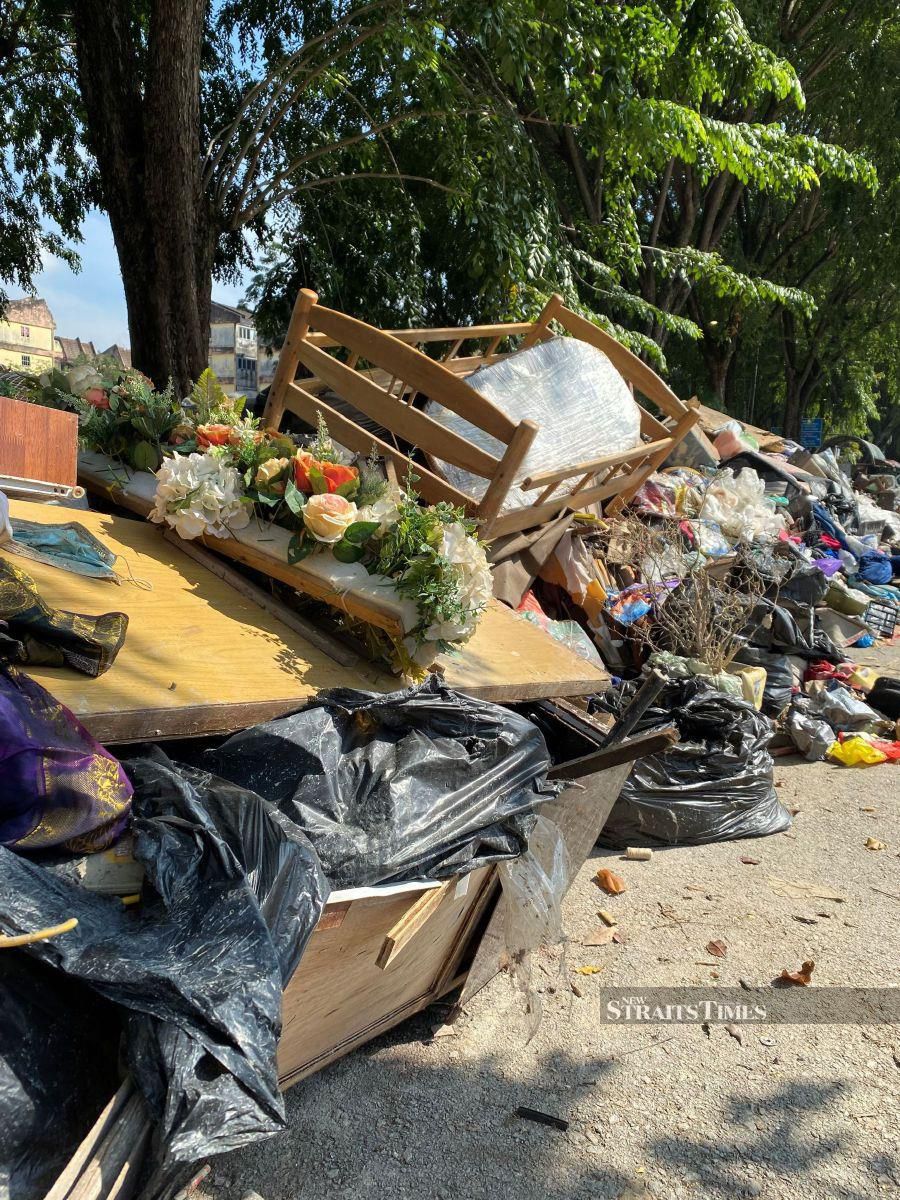
However, the presence of nearly 20 volunteers at the house was heart-warming. Neighbours, relatives and friends all rolled up their sleeves to clear the house of dirt and debris. The group of people was the perfect picture of multiracial Malaysia.
Malays, Indians, Chinese and those from mixed parentage became like one big family. I felt my spirit lift seeing racial unity still so much alive. It was a stark contrast to the hate speeches, racial slurs and profanities bandied about on social media and political platforms.
When it came to the matter of life and death, the people quickly rallied around to help one another. The scenes before me at the flood victim's house in Taman Sri Muda were similar to many other places afflicted by the ravaging flood.
Those who came to help in the aftermath of the flood just knew what to do, much like the different parts of a well-oiled machine, with every part doing its bit to make the whole machine work. Strong, young men lifted, heaved and hauled heavy household items, and discarded the damaged ones to the roadside. Sweeping, scrubbing and washing, the ladies moved swiftly, while the kids collected lighter stuff and threw them in bins.
It was all back-breaking work, but spirits were high. When it was time for a break, laughter and banter filled the air. Food was aplenty, courtesy of donors. Out came clean stools and the volunteers gathered to eat outside the compound of the house. Strangers walked along the street with grocery bags and food packs in their hands and dropped these from house to house. Such was the generosity of Malaysians.
HOPE FLOATS
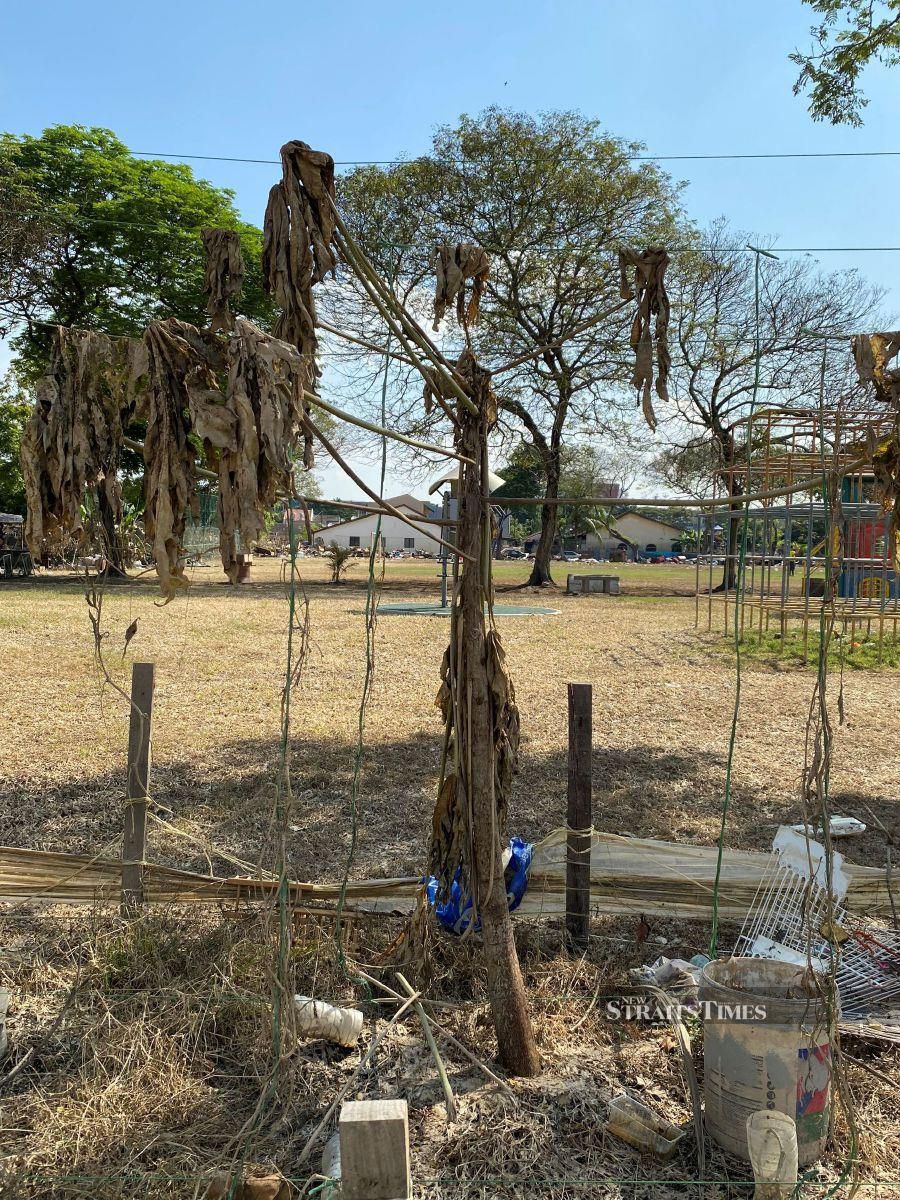
From more subdued conversations, I learnt of the sufferings of many in the neighbourhood when it was inundated by the floodwaters. Within several hours of heavy downpour, torrents of water submerged the single-storey houses. Many managed to climb on their roofs and spent agonising hours through the night, waiting to be rescued. The old man and his daughter couldn't escape in time. They drowned.
When the waters began to recede, foul smell started to swirl in the air. One victim described the putrid, decaying odour of dead bodies, melded with the stench of clogged drains, dead rats, damp wood and mattresses as horribly nauseating.
Even ornamental fishes bred in water tanks didn't survive in the muddy waters. A prized arowana had its head severed; perhaps something sharp had pierced it in the melee. Imagine the stink from the dead fishes filling the air, too. It makes one realise the fragility of life — here today, and gone tomorrow.
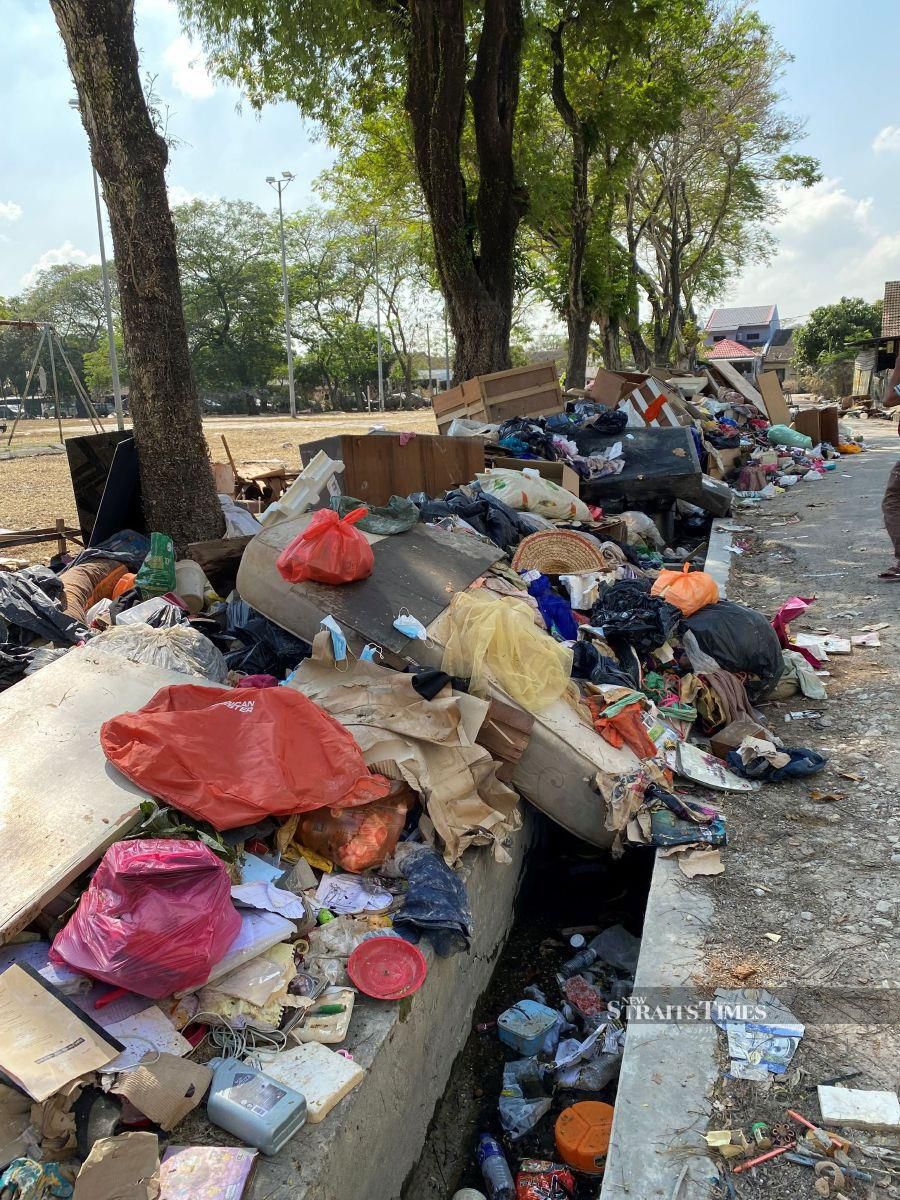
This was my first ever flood experience — my area in Section 13, Shah Alam was also one of the areas badly affected — and it has left me with a greater realisation of how fragile life is. One minute we may be languishing in great comfort, the next moment everything we own may be gone completely.
As I exited the area, I surveyed the devastation around me. The damaged, broken things perhaps reflected the dashed feelings of the victims. But, deep in the heart of every one of them, I'm sure as they start rebuilding their lives, they harbour the hope that such a terrible tragedy will not happen again.


